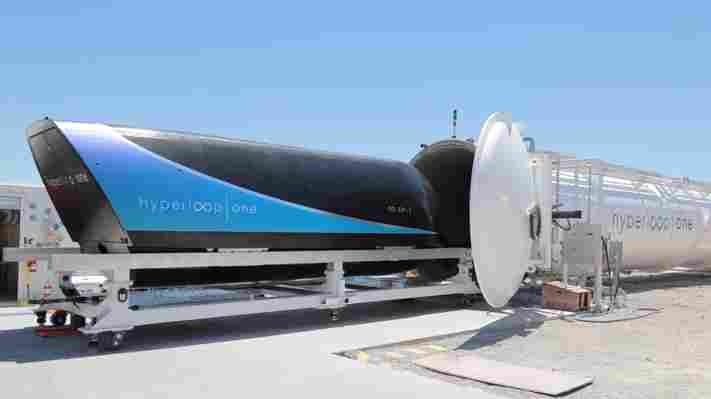Hyperloop is a new technology that is so ambitious, it seems impossible. Yet, after a successful test over the weekend, the three year old company advanced one major step forward in realizing its ultimate goal—safely shuttling passengers between cities at a rate of nearly 200 m.p.h. On a track in a Nevada desert, the Hyperloop One XP-1 (the name of the first-generation pod), successfully accelerated nearly 1,640 feet in 5 seconds at a shocking speed of 192 m.p.h.

"This is the beginning, and the dawn of a new era of transportation," said Shervin Pishevar, Executive Chairman and Co-founder of Hyperloop One, in a statement. "When you hear the sound of the Hyperloop One, you hear the sound of the future." His company's product works by using an electric propulsion system (generating more than 3,000 horsepower) that accelerates a pod through a tube 11 feet in diameter. The pods glide over the surface as they move within a tube that's been stripped of air, which translates to almost frictionless motion during the commute. In more digestible terms, this means a trip from Los Angeles to San Francisco in roughly 30 minutes (a statistic the company says is possible) is that much closer to actually happening.
Last weekend's test, however, is what Hyperloop One is calling a "proof of concept." And while it was a tangible step in the right direction, there is still much more that needs to be worked out before any human can climb aboard for an inaugural trip. Quickly and efficiently loading people and/or cargo into the tubes without interrupting the motion and weight during a trip, and building stations are a few significant details that need to be understood before the technology can be used for the masses. What's more, if Hyperloop One cannot find a way to compete with the ticket rates found in airlines, trains, or buses, the mode of transportation will only be used by the uber-wealthy.
The concept for Hyperloop was first introduced in 2013. But since then, others have come to take the reigns of the project, as Musk has been increasingly busy advancing other revolutionary projects such as Tesla cars and SpaceX rockets.
